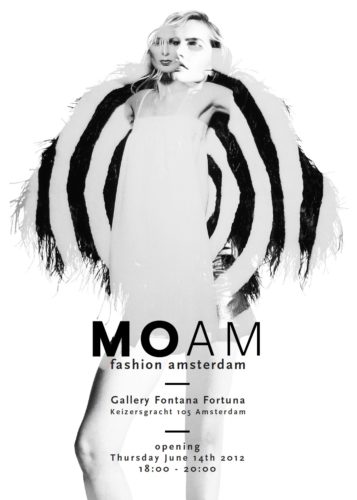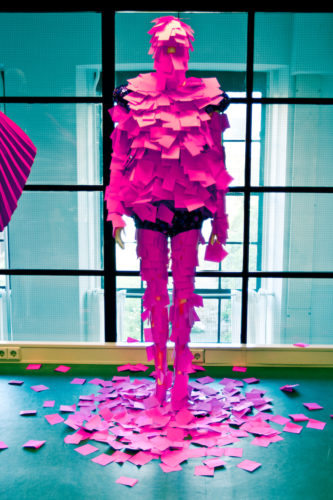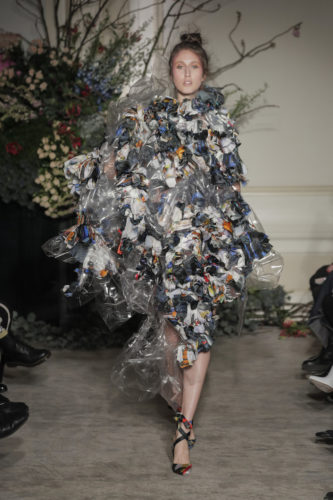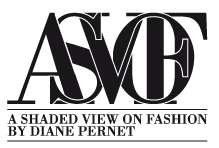Dear Shaded Viewers and Diane,
Given that the recent political election was hampered by a pandemic, the Netherlands still received a high turnout of voters and made great improvements to its parliamentary representatives––a socially progressive female politician is seated next to the prime minister now. However, none of the parties’ candidates included the word fashion in their list of promises, and the country sorely needs to steady the consumerist ready-to-wear shopping behaviors that are so typical of the lowlands. Reforming the retail landscape sounds almost utopian in a country whose high streets are lined with multinational chain stores, and where retail outlets like Zara or H&M can be found in even the smallest cities. It’s a challenge for municipalities across the Netherlands in the coming four-year term to properly address workers’ rights in the fast fashion industry, as well as addressing sustainability, climate change, and diversity in general; but they have the bonus of using fashion as a vehicle to address these issues.
Parallel to the power shifts in the political landscape, Amsterdam-based fashion platform MOAM Foundation has received heavy criticism after the foundation’s director was accused of sexual harassment, and was followed up with an investigation. This news has not only fractured the already frail national system––there’s no fashion world in the Netherlands, except for a small community of progressive thinkers and contemporary designers––it has debilitated it. The accusations gave rise to a number of criticisms about the pyramid system that supports only those at the top in the fashion industry, and how it prevents any possibility of solidarity, satisfaction, or pride among workers. In reactions from both ends of the spectrum, educators, makers, promoters, and viewers disclosed how frequently abuses of power have been concealed to protect the same individuals who control and administrate fashion. Recently, and perhaps surprisingly, a few fashion organizations merged to form one single organization. Ramifying––vertakken––seems to be the next phenomenon to take the stage but unfortunately there is no clear outline of their mission. How necessary and relevant their role will be is rather vague for potential candidates who wish to evaluate their roles solo––some of the organizations should become more established before they consider merging.

It brings to attention how this potent mix of emotional, financial, administrative––and now even physical––power is becoming intolerable for everyone, especially so for Amsterdam’s fashion university students who are demanding accountability across all layers of the pyramid. They are not simply asking existing professionals to evaluate their school works, but for greater awareness across the industry in general. This is quite a complex scenario, wherein the knowledge of teaching staff is being exposed as insufficient. Staff should be providing an education that transcends the field of design and includes an ethics that students can take beyond formal education.
One could blame the limited agenda we are persistently faced with in the Netherlands’ fashion industry, or the cozy social atmosphere at the fashion events. At several MOAM events, qualified critics were seated in the first row but never published critical reviews. It became standard for people to attend MOAM events and to turn a blind eye to critique, resulting in a complacent kind of charity and indirect support. Would the public opinion of MOAM’s shows have challenged the platform to adapt and prosper?

In the end, MOAM hardly ever made headlines in national fashion press, except for a few interviews with the director in fashion magazines and newspapers that had direct relations with one of the sponsors. It was even included as a highlight during the yearly fashion calendar, but was barely mentioned afterwards. From the first edition until the last, qualified national professionals provided MOAM with their expertize while simultaneously failing to attribute the platform with a single strength. Let’s hope that their aspirations for MOAM’s improvement were what led them to sell their services.
The social buzz around fashion events in the Netherlands paired with the public’s blasé attitude explain why MOAM’s events were so well attended, and this shielded it from the possibility of serious criticism
From our own experience of attending two MOAM events since it launched––one in 2012 (our favorite) and one in 2018––we quickly perceived it to be a generic platform with a classic soul, which was surprising given that a young man was its commander from the start. It certainly made some smart choices at the right moments, was excellent at name-dropping and occasionally matchmaking, but it hardly delivered an innovative vision (so far, everything MOAM executed felt very similar if not directly appropriated from the previous Dutch Fashion Foundation’s prestigious Prelude, including its satellite events and awards). Innovation was barely detectable and it never dared to take big creative risks, something that is almost mandatory if you are operating from Amsterdam. The security around MOAM’s aura, visible even today at its rather melancholic site, shows how much control defined the organization’s DNA. It was all about big projects that were very distant from the “small but beautiful” slogan that would have suited the house better. In every edition, perfection prevented the young participating talents from being represented authentically; and it all looked too safe. There was neither poetry nor anarchism; instead, a generic template production, which lacked all spontaneity and was repeated year after year.

You would expect MOAM to produce groundbreaking events when you take into account the vast budgets the company received from funds and sponsors. On some occasions, the caliber of photographers and models MOAM hired were at complete odds with the modesty of its participating young designers. Why would an upcoming designer or young talent want to work with a mega professional? It remains to be seen why a simple merchandising scarf had to be draped around the neck of a top international model, and photographed by the most expensive photographer. Sometimes the operating layers between professionals and participants were so distant from each other that we suspect there was more stress in those collaborations than there was fun. MOAM was not representing the youth and vibrancy its public initially wished for, but managed to remain uncritical in all aspects.

For fashion students and recent design graduates, 2021’s fashion world is not unlike the current situation in Dutch politics. We have an old system coming up against a new generation who are dying for fresh air. Ten long years of power in the hands of the same conservative party that brushed off political scandals like dust of its shoulder, the fashion industry too lays at the mercy of a few administrators whose presence is repetitive and tedious for students and young talents. If the teaching professional you are expected to listen to and learn from is also the one judging your funding application, is on the jury of the main national competition you have been nominated for, the headhunter scouting you for a job, and the one you are expected to share all your frustrations, insecurities, and issues corresponding to the times we live in, collisions are absolutely inevitable. The need for a circular system and plurality within education and the wider field in the Netherlands is more urgent now than ever, just as it is with politics. From headhunters, stylists and photographers to consultants, coaches, and journalists, the time to dissolve static administrations has arrived. And, according to a new generation of time changers, there’s no way back.
We should give credit to MOAM for making us aware of how badly it can go when too much money and power falls into the same hands, polluting the only system we have.
Wishing all the victims get the right support and compensation––from emotional to financial. Time will tell if MOAM will part ways with its presently inactive director, and if it is to regain its audience’s respect the organization will need to drastically restructure to guarantee no further abuse can occur.
Bottom line to all bachelor students and recent graduates:
• Make sure you get references from more experienced colleagues if you are approached by a creative agency or platform requesting your participation
• Don’t say yes immediately, take your time to think about each request
• Make sure production costs are covered entirely by the organizer and do not forget to request your own fee. Your skills are just as important as the organizer’s: do not work for free
• With your presence and when in good hands, we will keep believing in fashion
Best,
Marcelo Horacio Maquieira Piriz
Video MOAM 2012 – Courtesy of Pr – © Winter Vandenbrink
Photos © Courtesy of Pr (from Oficina Gabardine’s archive)
